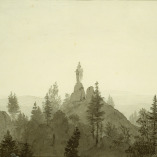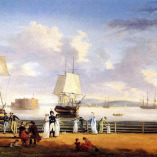
Little Harbor in Normandy, by Georges Braque, 1909. Wikimedia Commons / The Art Institute of Chicago.
During the American Revolution—and in all the years since—many believed that “privateering was a sideshow in the war,” writes Eric Jay Dolin in Rebels at Sea. “Privateering has long been given short shrift in general histories of the conflict, where privateers are treated as a minor theme if they are mentioned at all. The coverage in maritime and naval histories of the Revolution is not much better, with privateering often overshadowed by the exploits of the Continental navy.”
This week on the podcast, Lewis H. Lapham speaks with Eric Jay Dolin, author of Rebels at Sea: Privateering in the American Revolution, making the case that while “privateering was not the single, decisive factor in beating the British—there was no one cause—it was extremely important nonetheless.”
Thanks to our generous donors. Lead support for this podcast has been provided by Elizabeth “Lisette” Prince. Additional support was provided by James J. “Jimmy” Coleman Jr.






